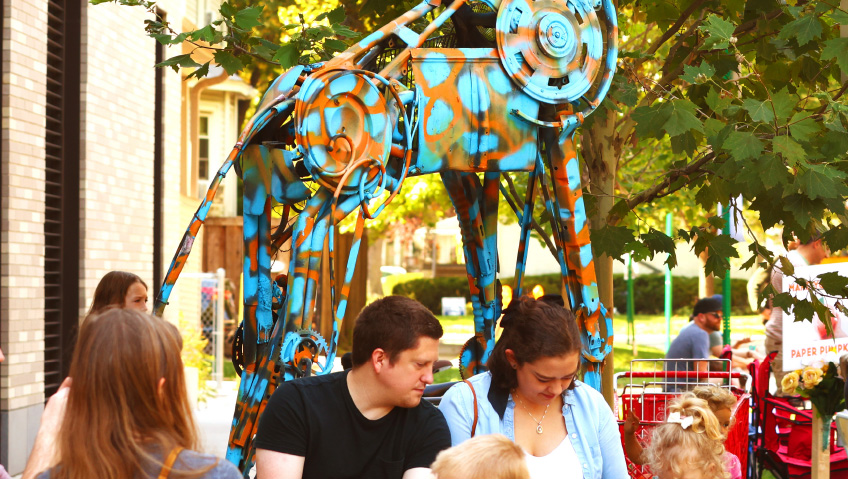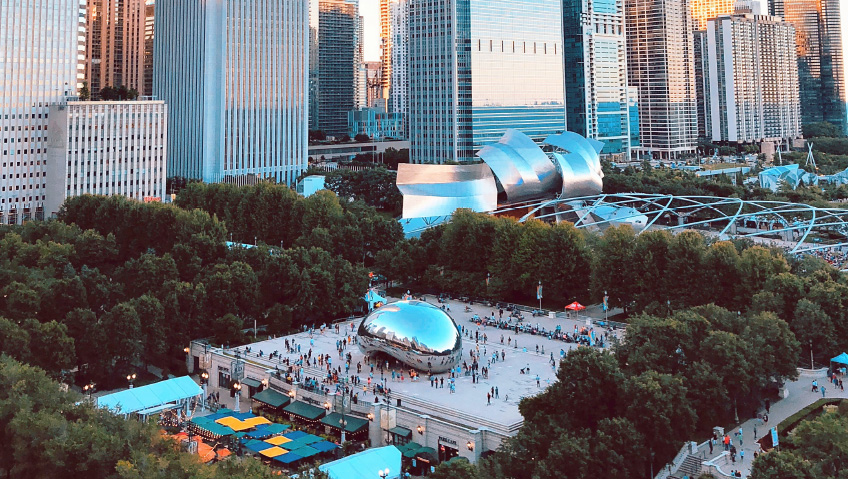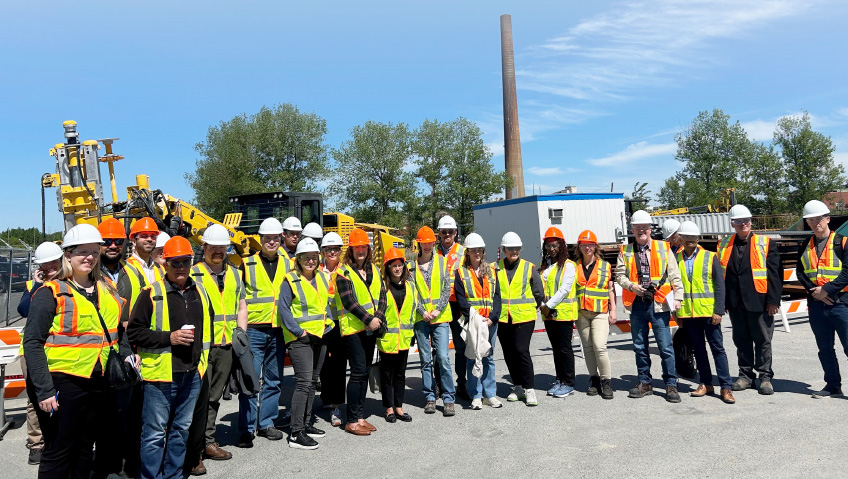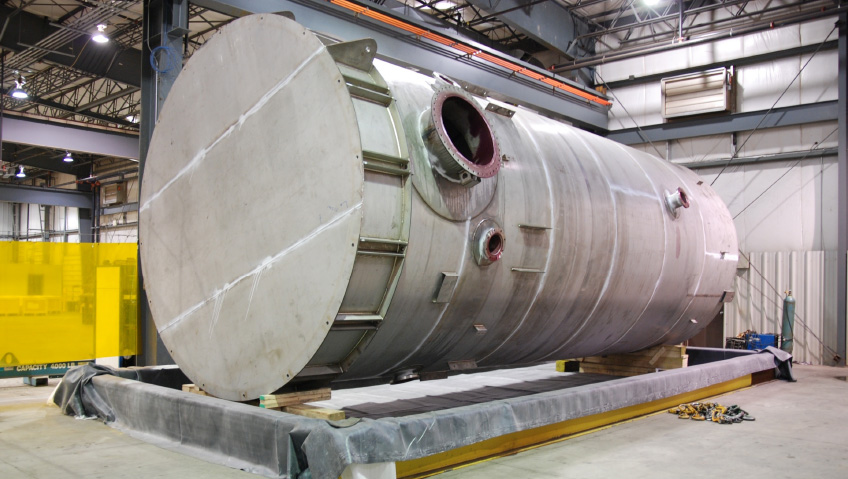When Angela Nagy was 18, she was hired to coordinate grants to build an interpretive greenway trail along Mission Creek in Kelowna, British Columbia, about four and a half hours northeast of Vancouver. The aim was to protect the ecosystem of the creek and support community learning about native species, history, and conservation.
What she realized very early on was that if she was going to help write grants, she had to have a good understanding of how people and the city were impacting the ecosystem.
“That really opened my eyes. I learned a lot about how human behaviour impacts the environment, and that there weren’t necessarily regulations in place to prevent it,” says Nagy. “I just assumed, ‘hey, if these things are bad for the environment, the government would stop that.’ Well, I quickly learned that’s not always how things work.”
The more she learned, the more frustrated she became. At the same time that she was working on writing grants, she was involved in a project to reintroduce peregrine falcons that had been driven out of the Okanagan Valley by the use of DDT in the 1960s. Not only did she help bring back breeding pairs of falcons to the region, but she also learnt that she wanted—needed—to make a difference through protecting nature.
Care for nature, care for community
This set the tone for what was to come. Eventually, Nagy served on Kelowna’s city council and supported green policies for the community, including supporting the densification of the downtown core and creating a permanent growth boundary around the city to prevent urban sprawl.
Through her community work, she came to recognize the gulf between large-scale green initiatives in communities and regions and the pressing needs of small and medium-sized businesses, which are the lifeblood of these local economies.
The thing about small and medium businesses is that climate change and issues have a direct impact on them, but unlike bigger enterprises out there, they don’t often have the resources to attract the attention of the large consulting firms, or the knowledge and time to tackle sustainability themselves. This is an important gap to address when you consider that smaller enterprises represent up to 98 percent of all businesses in the economy.
Nagy doesn’t shy away from a challenge once she’s identified a problem, so in 2006 she became a consultant for small and medium-sized enterprises to help them make sustainability part of their business operations. That led her to found her award-winning company, GreenStep Solutions Inc., in 2008.
At its heart, GreenStep helps businesses and organizations tackle what may have seemed overwhelming, helping them to measure, report on, and improve their sustainability performance, doing their part to protect the planet.
This is largely accomplished by providing sustainability and regenerative strategy development, carbon footprint measurement, lifecycle analysis, and a range of certification programs, software tools, and consulting services. As founder and CEO, Nagy has been there throughout, shaping how GreenStep helps businesses make sustainability part of their future. Now, GreenStep has been in business for 15 years and is issuing its first annual sustainability report to mark this milestone and quantify its 15 years of impact.
A strategy for Sysco
While focusing primarily on smaller companies, one of the firm’s early clients was Sysco Food Systems, with its regional team based in Kelowna. “The initial process was helping them to develop a sustainability strategy and support them in articulating it,” says Nagy. “This was pivotal in Sysco securing a million-dollar contract with the University of British Columbia which had sustainability criteria as part of the contract.”
She worked with Sysco on goals related to energy efficiency, reducing energy consumption, and environmental impacts of the business. She supported Sysco in identifying ways to save energy in the warehouse, from lighting to refrigeration equipment, and save on fuel consumption through route efficiency for delivery drivers. Waste reduction was also important, including eliminating single-use items in employee cafeterias and kitchens.
“There were some really measurable impacts from those efforts,” she says. “They also set a target for local procurement that led to a whole other level of engagement with them where we developed a local procurement strategy and connected with farmers to overcome barriers in getting local food to local tables.”
Setting the example
The company sets an example for others to follow, having been carbon-neutral since 2011 and becoming a certified B Corporation in 2015. The office is entirely powered by low-impact renewable energy with Bullfrog Power, which uses renewable sources. And, as part of its offerings for the tourism sector, GreenStep has achieved Global Sustainable Tourism Council (GSTC)-recognized status for its Sustainable Tourism criteria for tourism businesses and destinations and has worked with hundreds of tourism businesses, destinations, and industry associations across Canada to develop sustainability and climate action strategies, provide certification, and measure their carbon footprint.
The ongoing work in certification for sustainable tourism is key, especially given the impact the sector has on the climate. “Depending on the studies that you look at, tourism generates eight to 10 percent of global greenhouse gas emissions. So there’s a significant impact. Also, there has been growing interest among destinations in managing the impact that tourism has on communities and the environment,” Nagy notes.
One factor in all of this is that travellers are looking for sustainable options for their destinations. “The EcoFund program that we’ve developed for the tourism sector focuses on helping accommodation, restaurants, and transportation companies to engage their guests in creating a fund to invest in large projects that help them operate more efficiently. There’s a tremendous opportunity to help those sectors drive down not only their energy consumption and carbon footprint, but also their costs.”
This can start with simple moves, like converting to more energy-efficient lighting. For hotels, another huge opportunity can be found in occupancy sensors and controls in rooms that control both HVAC and lighting. “It’s a relatively low-cost investment on a per-room basis that can have significant operational cost savings,” Nagy explains. “And as energy costs rise, as carbon taxes increase significantly over the next six to seven years, going from $65 to $170 a ton in Canada by 2031, that’s going to significantly increase the cost of energy for all businesses.”
To that end, the company maintains partnerships and works directly with the Tourism Industry Associations of Canada, Ontario, and B.C., along with the B.C. Hotel Association, the Canada West Ski Areas Association, and Wine B.C., among others, to promote sustainable actions throughout the industry.
UN recognition
Prestigious recent recognition for GreenStep was becoming an official Affiliate Member of the United Nations World Tourism Organization, enabling the company to align with and support efforts at the international level to advance the 17 United Nations Sustainable Development Goals.
“One of the things that we’re really proud of is offering free tools for the tourism sector to measure their performance,” says Nagy. “We’ve invested a lot of money and time into generating low- and no-cost tools and guidance. Because our target market is small to medium enterprises, we need to make sure we can deliver opportunities for them to engage no matter where they’re at.”
To this day, the goals Angela Nagy had at the beginning of her career continue to drive the goals of GreenStep for the future: providing tools for everyday people to save the planet.
“Our vision is to become known for improving the sustainability performance of small and medium-sized enterprises in North America,” she says. “Literally, we want to save the world: help companies drive down their carbon footprint and other impacts, then start working on regenerative strategies to heal the things we’ve damaged. To achieve real sustainability, it’s about creating an environment where everyone and everything can thrive.”






